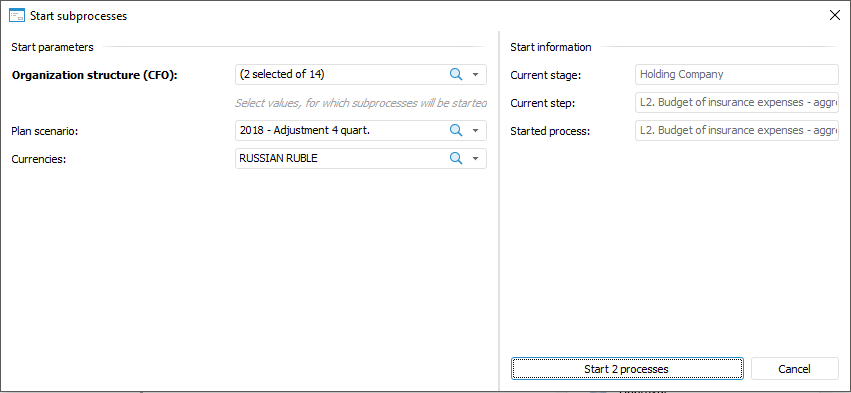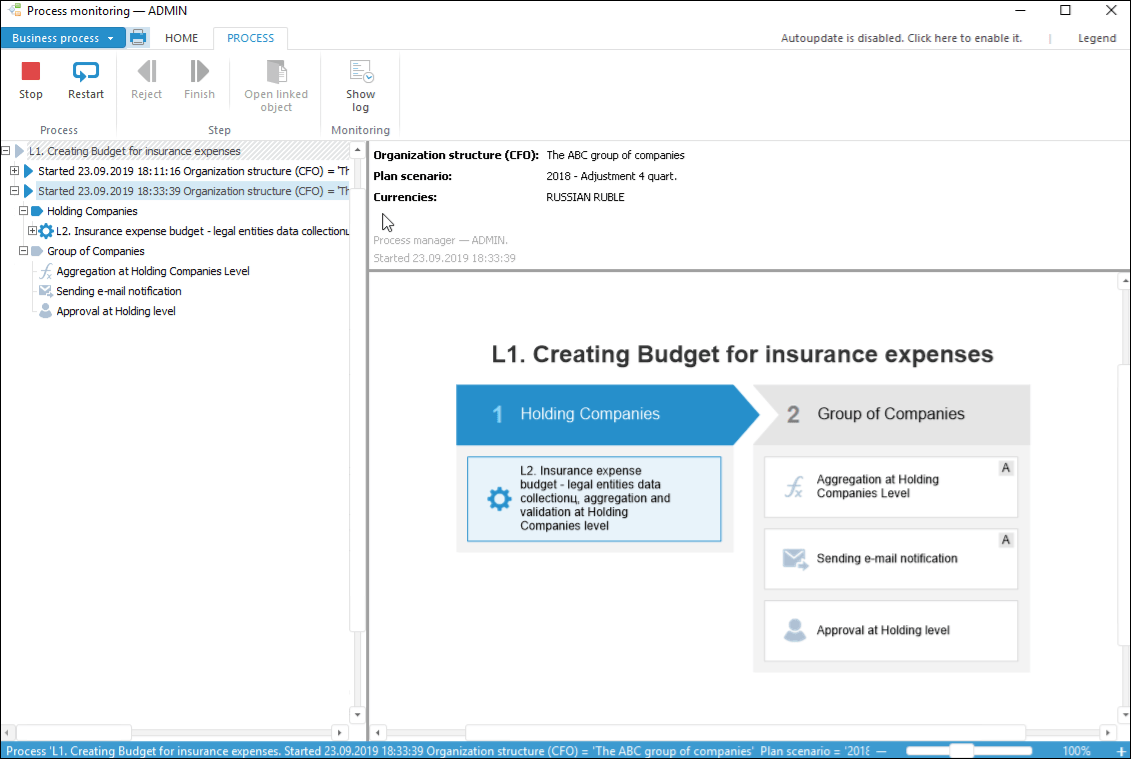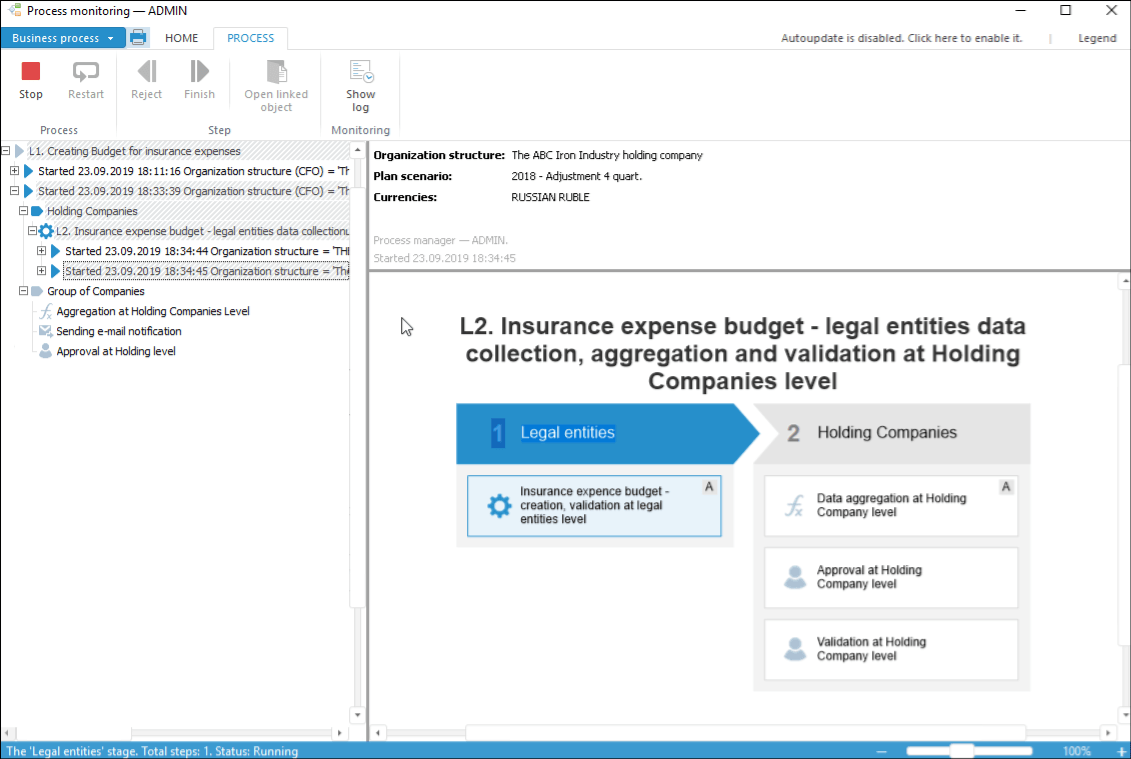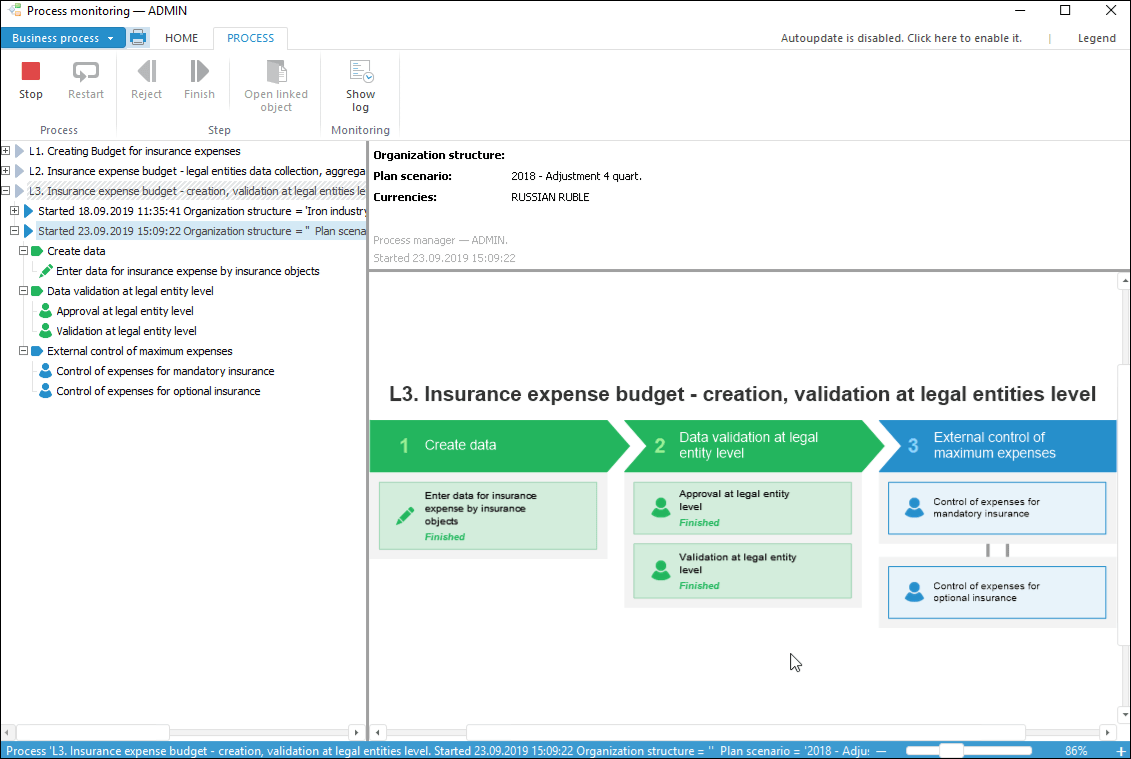
Executing the step with the Subprocess Call type, if the Group Call parameter is set, means that on subprocess execution several subprocess instances are started according to the specified division parameters. Subprocesses can be started manually or automatically depending on step settings.
As an example, let us study the case of the process with two nested subprocesses:
The subprocess Insurance Expense Budget - Collecting legal Entities Data, Aggregation, and Approval at Holding Level with manual execution
and the subprocess for legal entities Insurance Expense Budget - Creation, Approval at Legal Entity Level with automatic execution:

To execute a step of the Subprocess Call type, execute the steps:
Start the process for execution.
Select the subprocess Insurance Expense Budget - Collecting Legal Entities Data, Aggregation, and Approval at Holding Level with manual execution in the process tree or working area, and click the ![]() Finish button. To set group call parameters, open the Subprocess Call dialog box.
Finish button. To set group call parameters, open the Subprocess Call dialog box.
In the Subprocess Call dialog box in the Start Parameters area, the values, for which subprocesses are started, are automatically specified:

Click the Run button.
For each parameter Organization Structure (Central Federal District), an individual subprocess instance is started:

For the subprocess Insurance Expense Budget - Creation, Approval at Legal Entity Level with automatic execution, nested subprocess instances are started automatically:

Execute all steps of a single subprocess instance. After all the steps are executed, the executed process instance is removed from the monitoring window.

Thus, the monitoring window contains only the process and subprocess instances with execution steps.
NOTE. Executed subprocess can be displayed in process tree with all steps after its execution, if the HIDE_FINISHED_BPROCESSINSTANCES global variable is set to 0.
After executing subprocess steps it is available to view the execution log.
See also:
Process Execution Monitoring | Process Stages/Steps Execution Log